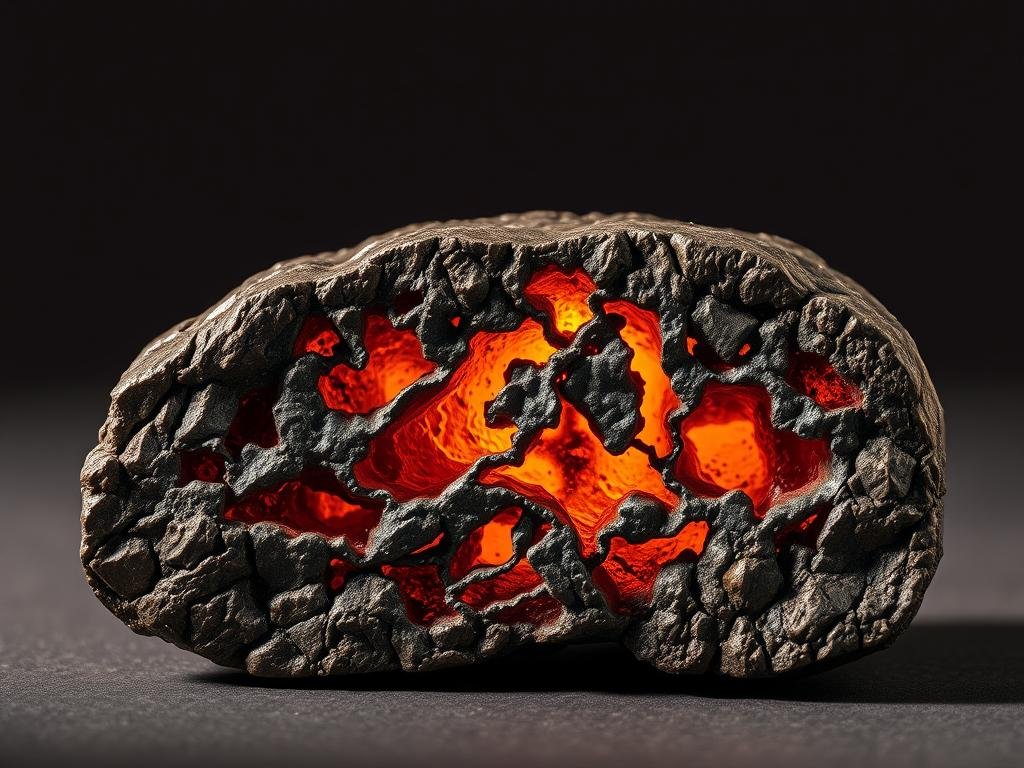Iron, a fundamental element in the Earth’s crust, is a crucial material in various industries due to its unique properties. One of its key characteristics is density, which significantly influences its applications and performance.
The density of iron is approximately 7.87 grams per cubic centimeter (g/cm³), a fundamental physical property that affects its widespread use. Understanding iron’s density is vital for material selection in engineering applications, comparing it to other common materials, and recognizing its value in structural applications.
Iron’s density impacts its strength characteristics and versatility in various applications, from architectural elements to protective armor. This introduction sets the stage for a comprehensive examination of iron density, establishing the scientific and practical context for readers.
Understanding the Density of Iron
Density, a measure of mass per unit volume, is a critical characteristic of iron that affects its performance in various contexts. It is defined as the mass of a substance per unit volume, typically measured in grams per cubic centimeter (g/cm³) or kilograms per cubic meter (kg/m³).
What Is Density and Why It Matters
Understanding density is crucial for engineering applications as it directly relates to the weight of components and structures, affecting design considerations and material selection processes. The relationship between mass and volume in iron creates a balance of strength and weight that makes it ideal for numerous structural applications where durability is required.
- Density is a fundamental physical property that influences the behavior of iron in different environments.
- The density of a substance determines its weight and affects its suitability for various applications.
The Standard Density of Iron: 7.87 g/cm³
The standard density of iron at room temperature is approximately 7.87 g/cm³, making it significantly denser than water (1 g/cm³) but less dense than metals like lead (11.34 g/cm³). To put this into perspective, consider that iron is nearly eight times denser than water.
| Material | Density (g/cm³) |
|---|---|
| Water | 1 |
| Iron | 7.87 |
| Lead | 11.34 |
Precise knowledge of iron’s density is essential for manufacturing specifications and quality control. By understanding the density of iron, engineers and manufacturers can make informed decisions about its use in various applications.
The Science Behind Iron’s Density
At the heart of iron’s density is its unique atomic configuration. The density of a material is not just a simple physical property; it is deeply rooted in its atomic structure and how the atoms are arranged.
Atomic Structure and Crystal Formation
Iron atoms form a crystal structure where each atom is surrounded by other atoms in a repeating pattern that occupies the minimum empty space. This arrangement is crucial in determining the density of iron. At room temperature, iron has a body-centered cubic (BCC) crystal structure, which contributes to its characteristic density of 7.87 g/cm³.
The crystal structure of iron changes at different temperatures. For instance, at higher temperatures, iron transitions from a BCC to a face-centered cubic (FCC) structure, known as austenite. Interestingly, austenite iron, which is in the FCC form, has a different density compared to ferritic iron, which is in the BCC structure.
How Density Relates to Other Physical Properties
The density of iron is closely related to its other physical properties, including thermal conductivity, electrical conductivity, and magnetic properties. For example, the atomic weight of iron (55.845 u) and its atomic number (26) play significant roles in determining its density relative to other elements on the periodic table.
Understanding the science behind iron’s density provides valuable insights into why this metal behaves as it does under various conditions. This knowledge is crucial in manipulating iron’s properties in alloy formation, where the addition of other elements can significantly alter its density and other physical characteristics.
| Property | Value for Iron | Relevance to Density |
|---|---|---|
| Atomic Weight | 55.845 u | Directly affects density |
| Crystal Structure at Room Temperature | BCC | Influences density |
| Density | 7.87 g/cm³ | – |
| Thermal Conductivity | High | Related to atomic structure |
Comparing Iron Density to Other Metals
Understanding the density of iron in relation to other metals is crucial for various industrial applications. The density of a metal is a fundamental property that influences its suitability for different uses, from construction and manufacturing to specialized applications in defense and engineering.
Iron vs. Aluminum, Copper, and Lead
Iron’s density of 7.87 g/cm³ is significantly higher than that of aluminum (approximately 2.70 g/cm³) and titanium (approximately 4.51 g/cm³), making iron and its alloys preferable in applications where high strength and durability are required. However, iron is less dense than copper (approximately 8.96 g/cm³) and lead (approximately 11.34 g/cm³), which have their own set of applications based on their unique properties.
When comparing iron to these metals, the differences in density significantly impact material selection. For instance, aluminum’s lower density makes it ideal for aerospace applications where weight reduction is critical, while copper’s high density and excellent electrical conductivity make it suitable for electrical wiring and circuits.
| Metal | Density (g/cm³) |
|---|---|
| Aluminum | 2.70 |
| Titanium | 4.51 |
| Iron | 7.87 |
| Copper | 8.96 |
| Lead | 11.34 |
Iron vs. Steel and Other Iron Alloys
When iron is alloyed with carbon and other elements to form steel, the resulting density can vary slightly, typically ranging from 7.75 to 8.05 g/cm³, depending on the composition. This variation in density, although not drastic, can influence the selection of steel for specific applications, particularly in the automotive and construction industries.
The addition of alloying elements can also affect the physical properties of steel, making it more suitable for certain applications. For example, stainless steel, which contains chromium, is valued for its corrosion resistance, while high-carbon steel is used in applications requiring high strength and hardness.
Factors Affecting the Density of Iron
The density of iron is influenced by several factors, including its purity, the temperature it’s exposed to, and the methods used to process it. Understanding these factors is crucial for accurately predicting the behavior of iron in various applications.
Purity and Composition
The purity of iron significantly impacts its density. Pure iron, with a composition of 99.9% or more Fe, maintains a standard density of around 7.87 g/cm³. However, the presence of impurities or alloying elements can alter this density. For instance, the addition of carbon to iron to produce steel typically reduces its density compared to pure iron. Other elements, such as tungsten or molybdenum, can increase the density of iron alloys.
- Pure iron has a density of around 7.87 g/cm³.
- Alloying elements like carbon can reduce the density of iron.
- Elements such as tungsten or molybdenum can increase the density of iron alloys.
Temperature Effects
Temperature is another critical factor that affects the density of iron. As iron heats up, it expands, leading to a decrease in density. This thermal expansion is a quantifiable change that occurs across different temperature ranges. Understanding the thermal conductivity and expansion properties of iron is essential for applications where temperature variations are significant.

Form and Processing Methods
The method of processing iron, whether through casting, forging, or sintering, also impacts its density. Different processing techniques can result in variations in the microstructure of iron, affecting its overall density. For example, sintering can sometimes result in a less dense product due to the potential for porosity.
By understanding these factors, engineers and manufacturers can better predict the performance of iron in their designs and applications, ensuring more accurate specifications and material performance predictions.
Different Forms of Iron and Their Densities
Different forms of iron exhibit distinct density values, influenced by their composition and processing methods. The density of iron is a critical property that varies significantly across its different forms, including pure iron, cast iron, and wrought iron.
Pure Iron
Pure iron serves as the baseline reference with a density of 7.87 g/cm³. However, commercially pure iron typically contains small amounts of impurities that can slightly alter this value. The high density of pure iron is due to its crystalline structure and the absence of significant impurities or voids.
Cast Iron
Cast iron, containing 2-4% carbon and silicon, exhibits a lower density compared to pure iron, typically ranging from 6.8 to 7.8 g/cm³. The presence of graphite inclusions in cast iron creates microscopic voids, reducing its overall density. Different types of cast iron, such as gray, white, ductile, and malleable cast iron, have varying densities based on their specific carbon structures and processing methods.
“The density of cast iron can vary significantly due to differences in graphite morphology and the presence of other elements.”
Wrought Iron
Wrought iron, characterized by its fibrous slag inclusions, typically has a density ranging from 7.6 to 7.8 g/cm³, slightly lower than that of pure iron. The presence of non-metallic inclusions in wrought iron contributes to its reduced density compared to pure iron.
Understanding these density variations is crucial for material selection in engineering applications, as each form of iron offers different combinations of weight, strength, and other mechanical properties.
Applications of Iron Based on Its Density
The unique density of iron makes it an ideal material for various industrial, architectural, and defense applications. With its density of 7.87 g/cm³, iron offers a combination of strength, durability, and weight that is crucial for numerous uses.

Architectural and Structural Applications
Iron’s high density contributes to the stability and load-bearing capacity of buildings, bridges, and infrastructure components. Its density-to-strength ratio makes it particularly valuable in construction, providing the necessary structural integrity while remaining economically viable compared to other metals. The use of iron and its alloys, particularly steel, is extensive in construction due to its ability to support heavy loads and withstand various environmental conditions.
Manufacturing and Industrial Uses
The manufacturing sector leverages iron’s density for machinery components, engine blocks, and industrial equipment where mass and stability are required to withstand operational forces. Knowing the density of iron helps in designing parts that meet specific weight and strength requirements, making it a critical factor in precision parts manufacturing. Iron’s density ensures that machinery and equipment can operate under heavy loads and harsh conditions.
Specialized Applications in Defense and Armor
In specialized defense applications, iron’s density contributes to ballistic protection in armor plating, with the weight-to-protection ratio being a critical design consideration. The high density of iron makes it an effective material for armor, providing the necessary protection without compromising on mobility. Engineers and designers balance iron’s density with other properties to optimize performance in various defense applications.
In conclusion, the density of iron is a pivotal factor in its wide-ranging applications, from architectural and structural uses to manufacturing and defense. Its high density, combined with strength and durability, makes iron a versatile and valuable material in modern engineering and design.
Conclusion: The Enduring Importance of Iron Density
With its density being a key characteristic, iron remains one of the most versatile and widely used materials in modern industry. The density of iron, specifically 7.87 g/cm³, plays a crucial role in its applications across various fields, from construction to manufacturing and engineering.
Understanding iron density is crucial for several reasons, including material selection in engineering, structural applications, and manufacturing processes. This fundamental property influences the overall behavior of iron in different environments and applications, making it essential for engineers to make informed decisions.
The density of iron affects its strength, durability, and weight, making it a preferred choice for numerous applications, including the automotive industry, heavy machinery, and aerospace. By understanding the factors that affect iron density, such as purity, temperature, and processing methods, manufacturers can optimize iron-based materials for specific performance requirements.
In conclusion, the enduring importance of iron density lies in its ability to balance strength, weight, and cost-effectiveness, making it a vital component in modern engineering and technology.
